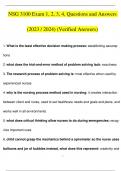,Chapter 1. It May Be News, But It Isn't
New: A Brief History of Globalization
Globalization has a history, though it is hard to say precisely when it began. The Roman Empire
doesn't qualify as global, because despite its enormous expanse and a certain level of economic
activity between the parts, most of the world was still outside its boundaries and most production
remained local. The British Empire in 1815, after Waterloo, had an even larger footprint, but
international trade was insignificant and one of the original purposes of the empire was to give
Britain privileged access to its colonies, as both sources of raw material and markets for its goods.
However, later in the nineteenth century, Britain led the move to reduce barriers to trade. At the
same time, the telegraph, steam transportation, and other technologies shrank the time and the cost
of moving information and goods, and people began to migrate in large numbers. Economic and
social activity across national boundaries grew in importance and began to attract notice.
In his classic book, The Great Illusion, British writer Norman Angell argue that, due to what we
now call globalization, the nation-state had declined as a factor in economic performance. The two
great economic forces, capital and labor, had become fully internationalized, cutting across state
borders. According to Angell, international finance had "become so independent and interwoven
with trade and industry . . . that political and military power can in reality do nothing for trade . . .
and all these factors are making rapidly for the disappearance of state rivalries."[3] As a
consequence, wars could no longer be fought profitably and were therefore becoming outmoded.
Nearly a century later, Thomas Friedman reaffirm this analysis: "As countries [get] woven into the
fabric of global trade and rising living . . . standard, the cost of war for the victor and vanquished
[becomes] prohibitively high."[4]
Angell received a Nobel Prize in 1933, but he won it for peace, not for prophecy. The Great
Illusion originally appeared in 1909 and was soon overtaken by events.[5] He was tragically wrong
about modern industrial states not going to war against one another, as World War I demonstrated
with the blood of millions. But he was also mistaken about a future of ever-increasing economic
internationalization and the diminishing importance of national boundaries. The rapid advance of
transportation and communication technologies did not lead to a more interdependent economic
world, at least not right away. Globalization, whether measured by trade, movements of capital, or
emigration, peaked between 1910 and 1920, and then declined steadily for the next 30 to 40 years.
Thomas Friedman may prove a better forecaster than Norman Angell, but we think that is unlikely.
Tradable Goods
Trade occurs when people in one country want something provided elsewhere, because it is better,
cheaper, or locally unavailable. The growth of trade within any particular category of goods
depends on falling transportation, communications, and financing costs. It also depends on the
absence of prohibitive government interference, through measures such as tariffs or quotas
imposed on imported goods.
,Some kinds of output are inherently easier to trade across national boundaries than others; grain
travels better than child care, for example. The overall importance of global trade depends on the
mix of final demand between easily traded goods and goods that don't travel well. Shifts in demand
toward nontraded goods (and services) may outweigh the effects of improvements in transportation,
communications, and financing, and government reductions in legislated barriers to trade. In that
case, globalization declines as a factor in overall economic life, despite trade-enhancing
improvements. A decline of this sort occurred in the 1920s, as trade as a portion of economic
output shrank. We think a similar decline is almost certain to happen in the foreseeable future.
The volume and importance of international trade has moved up and down over the last 200 years.
Starting early in the nineteenth century, continual improvements in transportation and
communications led to a steady growth in the importance of international trade relative to overall
economic activity. From 2 percent of total output in 1820, trade grew to 9 percent by 1875 (a 4.5-
fold increase) and then to 18 percent in 1920 (a twofold increase).[6] Table 1.1 presents an abridged
view of this history.
Table 1.1. Global Trade as Share of Global Output
Year Trade as Share of Output Annual Change
Source: A. Estevadeordal, B. Frantz, A.M. Taylor, "The Rise and Fall of World Trade, 1970–
1939," Quarterly Journal of Economics, May 2003, and International Monetary
Fund, International Financial Statistics.
1820 2%
1875 9% 3%
1910 16% 2%
1920 18% 0%
1950 13% −1%
1975 22% 2%
2000 30% 1%
Even during this boom period, the law of diminishing returns set in. In the first 55 years, from
1820 to 1875, blockbuster innovations, especially the rapid expansions of the railroads, the
emergence of coal-fired steamships to replace sailing vessels, and the invention of the telegraph,
generated an annual growth rate for international trade that exceeded the growth of overall output
, by 3 percent. During the next 35 years, from 1875 to 1910, the growth rate of trade surpassed that
of output by 1.7 percent per year. New technologies continued to appear—oil-powered ships,
motor transport on land, telephone and radio communications—and existing ones improved. But
their effects were less dramatic than the advances at the start of the period. Finally, in the 10 years
following Angell's book, from 1910 to 1920, trade grew only 0.3 percent per year more rapidly
than output, as the impact of these innovations declined still further.
After 1920, globalization went into reverse for three decades. Certainly, the Depression, in the
protectionist policies it spawned, and the great disruption of World War II played a role. But more
important were underlying economic developments that changed the mix of outputs in a way that
greatly reduced the overall significance of international trade.
Until 1920, the world economy was largely devoted to the production of commodities: raw food
and other agricultural products, metals and other minerals, coal, bulk textiles. As late as 1920,
expenditures on food accounted for more than 60 percent of total household spending in the United
States. But a major shift was in process, a shift that accelerated after 1920. Differentiated
manufactures—automobiles, household appliances, electrical equipment, processed foods—came
to dominate household spending and economic output.
Two forces spurred this transformation. First, production in agriculture, mining, and metals
became much more efficient. Rapid productivity growth drove down both prices and employment
in these commodity industries. Even though physical output continued to expand, the value and
economic significance of commodity products began a long decline. Second, incomes rose, thanks
to improved productivity. Consumers could spend less for the same quantity of basic goods they
had previously bought, leaving enough to buy the novel manufactured items that brought variety,
convenience, comfort, and status into their lives.
This changing composition of demand affected international trade. The infrastructure of trade—
transportation equipment, shipping lines, communications links, agency relationships, marketing
programs—had evolved to handle the movement and distribution of commodities, which was
uncomplicated. National differences in tastes and requirements for wheat, soybeans, steel, copper,
coal, cotton, wool, and the rest were either limited or nonexistent. Shipping could be done in bulk.
Prices were well-known and well-defined. Customized local marketing efforts and service support
after the sale were rarely required. This system, designed for bulk commodities, proved inadequate
to conduct trade in the differentiated manufactures that were capturing increasing amounts of
consumer spending.
By their very nature, differentiated products respond to local tastes and specifications, like clothing
styles and voltage requirements for electrical equipment. Prices are not set in global commodity
markets; they depend on the success of local marketing efforts. So does sales volume. Shipping
can require precise packaging and handling. And after-sale support for items like automobiles,
appliances, and industrial equipment entails extensive local service and supply networks. It took
time to set up this more elaborate commercial infrastructure, and until it was in place, trade suffered.
Both the changes in the composition of economic activity and the consequences for trade are
apparent in data for the U.S. economy (Table 1.2). In the two decades from 1900 to 1920,







